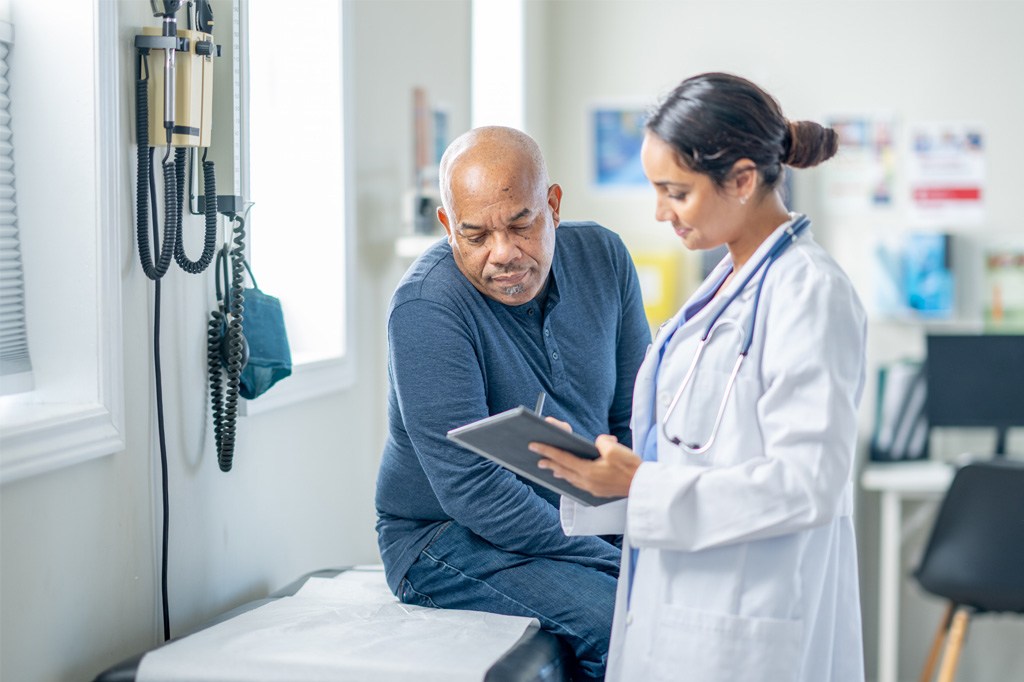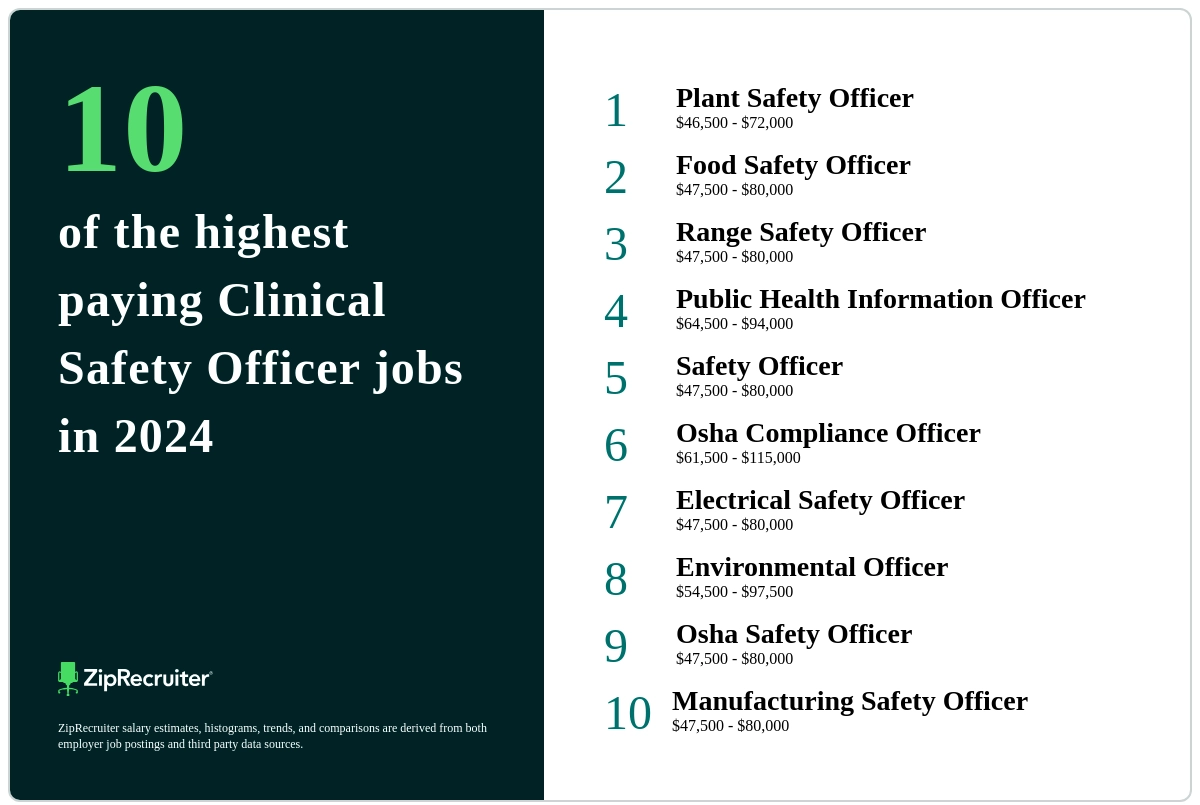How a Clinical Safety Officer Contributes to Risk Management and Patient Protection
How a Clinical Safety Officer Contributes to Risk Management and Patient Protection
Blog Article
Leading Responsibilities of a Medical Safety Policeman in Modern Medical Care
In the developing landscape of modern-day healthcare, the function of a Scientific Safety Policeman has come to be increasingly important. These specialists are tasked with methodically recognizing and managing medical dangers, yet their responsibilities prolong much beyond simple oversight. From establishing thorough security protocols to cultivating a culture of safety within health care groups, their impact is extensive. Furthermore, as they navigate the complexities of governing compliance and staff training, one need to take into consideration just how these initiatives straight impact patient treatment outcomes. What are the underlying obstacles they encounter in this complex duty, and exactly how can they be successfully resolved?
Threat Evaluation and Administration

The CSO teams up with multidisciplinary teams to gather information on incidents and near misses, facilitating a society of openness and constant improvement. By analyzing patterns and patterns, the CSO can identify locations calling for treatment, eventually decreasing the likelihood of damaging occasions. Additionally, the CSO ensures conformity with regulative standards and guidelines, which serve to boost person safety and reduce responsibility threats.
Efficient communication is essential; the CSO needs to convey danger findings to stakeholders, including medical care administrators, clients, and companies. Additionally, the CSO should remain abreast of emerging risks related to new modern technologies and therapy modalities, adjusting threat management techniques as necessary. Ultimately, by fostering an atmosphere of positive danger monitoring, the Professional Safety Officer adds significantly to the overall security and high quality of care provided within healthcare setups.
Creating Safety Procedures

In partnership with multidisciplinary teams, the Professional Safety and security Officer evaluates data from occurrence records and take the chance of assessments to inform procedure advancement. This consists of developing clear, workable treatments for numerous situations, such as infection control, medicine management, and emergency situation feedback. Making certain that protocols are not just reliable yet also practical is important; they should be easily recognized and integrated into everyday operations.
Moreover, the Scientific Safety Policeman stays updated on the most up to date developments in safety measures and healthcare innovations, adapting methods accordingly. Regular evaluations and updates of these protocols are necessary to ensure they continue to be pertinent and reliable in attending to emerging threats. Eventually, well-developed safety and security methods offer as a structure for a society of safety and security, cultivating an atmosphere where patient treatment is prioritized and dangers are systematically alleviated.
Performing Training Procedure
While safety and security procedures offer the view structure for threat monitoring, conducting effective training sessions is necessary to make certain that all health care team are proficient in these methods. A Professional Safety and security Police officer plays a crucial function in creating and carrying out thorough training programs tailored to the details requirements of various groups within the healthcare setting. This consists of arranging workshops, seminars, and hands-on training that deal with present safety and security standards, emergency situation procedures, and using security devices.
In Addition, the Medical Safety Policeman must analyze the understanding voids among team member, ensuring that training sessions are interesting and pertinent. Employing a mix of training approaches, such as interactive simulations and case studies, can boost understanding and retention. Clinical safety officer. Frequently arranged training refresher courses also strengthen team readiness and adaptability to advancing security procedures
Furthermore, cultivating a culture of safety and security within the company is vital. The Clinical Security Policeman need to motivate open discussion and responses during training sessions, enabling personnel to voice concerns and share experiences. investigate this site Eventually, well-conducted training sessions empower healthcare specialists to respond successfully to possible dangers, cultivating a more secure setting for both individuals and personnel.
Monitoring Conformity Criteria
Keeping track of compliance standards is integral to the duty of a Scientific Safety Officer, making certain that all security protocols are continually abided by throughout the health care facility. This obligation includes regular assessments of clinical methods, policies, and treatments to align them with well established regulatory and organizational criteria.
The Clinical Safety and security Officer need to conduct organized audits and assesses to recognize potential voids in conformity, promoting an aggressive strategy to patient safety and security. By executing durable tracking systems, the police officer can efficiently track adherence to safety and security protocols and promptly address any type of deviations.
Furthermore, the Medical Safety and security Officer teams up with various departments to make certain that all personnel recognize and understand compliance demands. This consists of analyzing event records, evaluating risk administration approaches, and providing feedback to enhance methods.
In addition, the police officer must stay updated on evolving healthcare guidelines and criteria, ensuring that the facility adapts accordingly. By cultivating a culture of responsibility, the Scientific Safety and security Police officer plays a crucial role in enhancing the overall safety and quality of care delivered to patients, ultimately adding to better health outcomes and business honesty.

Promoting a Society of Safety And Security
Creating a culture of safety and security within a healthcare facility is necessary for boosting and minimizing dangers person care. A Medical Security Police Officer (CSO) plays a crucial role in fostering this atmosphere by advertising liability, openness, and continual improvement among staff at all levels. The CSO carries out and creates safety and security methods that urge open interaction and coverage of cases without fear of reprisal.
To effectively promote a culture of security, the CSO has to participate in normal training sessions that stress the relevance of person safety and security and threat monitoring. These sessions must consist of real-life situation research studies and simulations to help staff recognize prospective dangers and comprehend their responsibilities in reducing them. Additionally, the CSO must help with interdisciplinary partnership, guaranteeing that all departments interact to attend to security have a peek at this website concerns adequately.
Normal analyses and comments systems are vital components of this society. The CSO should analyze safety and security information, identify fads, and share searchings for with the entire company to drive enhancement initiatives. By focusing on security, the CSO grows a setting where staff really feel equipped to advocate for their individuals, resulting in enhanced treatment quality and inevitably, better wellness results.
Conclusion
In conclusion, the function of a Clinical Security Policeman is important to cultivating a secure medical care setting. Inevitably, the initiatives of Clinical Safety Officers ensure that safety remains a paramount focus within healthcare setups.
Inevitably, by cultivating a setting of aggressive danger administration, the Scientific Safety and security Police officer adds substantially to the general security and high quality of care supplied within medical care setups.
Moreover, the Medical Safety Officer continues to be upgraded on the newest improvements in security steps and healthcare technologies, adjusting procedures accordingly. Inevitably, well-developed safety procedures offer as a foundation for a culture of safety and security, promoting an environment where person treatment is prioritized and threats are systematically mitigated.
To successfully promote a society of security, the CSO must involve in regular training sessions that stress the significance of patient security and risk administration (Clinical safety officer). Inevitably, the efforts of Clinical Security Officers make sure that safety stays a paramount emphasis within medical care settings
Report this page